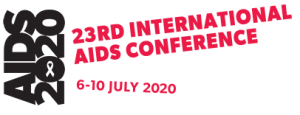This track will address the development of new prevention tools, the delivery of currently available prevention strategies, and the impact of expanding prevention options on the global HIV epidemic. With expanded implementation of existing prevention tools, countries and cities are seeing sustained declines in new HIV infections. However, while there is tremendous global opportunity for HIV prevention in 2020, there are also substantial challenges. The UNAIDS 2019 Global Update revealed that HIV prevention services reached less than 50% of members of key populations in more than half of the countries that reported on prevention. The results of large-scale universal test and treat trials were not consistently positive in terms of reducing new HIV infections, highlighting prevention/treatment gaps.
For oral PrEP, insufficient uptake and adherence are key barriers to potential impact, and novel approaches to maximizing PrEP knowledge and use are clearly an essential need. HIV prevention interfaces strongly with sexual and reproductive health, and optimizing prevention success will require more comprehensive prevention. This includes: attention to prevention for pregnant and lactating women; the interaction between HIV prevention and control of sexually transmitted infections; and HIV prevention within a larger context of reproductive justice.
The HIV prevention successes that have been seen at scale are not being shared equally, with the greatest impacts to date occurring among men in urban centres of the global North. An important cross-cutting priority for this track is strategies to expand prevention success to those in the global South, adolescent girls and women, marginalized populations worldwide, people who use drugs and other key groups.
Finally, the success of HIV prevention implementation poses logistical challenges to testing new prevention modalities, and creative approaches to new trial designs are required. Areas of special interest include:
- Treatment as prevention. Critical review of universal test and treat trials; optimized interventions to improve access and use by adolescents, key populations, men; improving U=U community awareness
- PrEP implementation and development. Scale up and impact on global HIV epidemiology, with a focus on countries furthest ahead in oral PrEP delivery; strategies to simplify PrEP delivery and expand access; successes and challenges among important populations (men who have sex with men, transgender women, adolescents, young women); pharmacokinetics/pharmacodynamics of PrEP agents (including tenofovir alafenamide); new PrEP agents and delivery approaches (including injectables, long-acting formulations, implantables, vaginal rings, vaginal films and novel topical agents)
- Broadly neutralizing antibodies and vaccines. Current state of trials and looking ahead to outcomes; anticipating realistic consideration of delivery challenges for these strategies
- Integrated prevention approaches. Impact at scale of combination prevention delivery across settings; promising supportive interventions (for example, community-based delivery, lay health worker engagement, m-health applications) to facilitate scale up and access to prevention; evaluation of social, behavioural and structural interventions that address co-morbidities, including poor mental health and substance use
- Key populations and the intersection with larger issues of sexual and reproductive health. Interface of prevention scale up and the global STI epidemic and strategies for STI prevention; PrEP options and choices, including analogies to contraceptive choice; drug interactions and engagement in prevention for transgender populations; new prevention interventions for drug users; HIV prevention in the context of contraceptive delivery and the interaction of hormonal contraception and HIV risk
- Novel trial design and monitoring strategies. New trial designs for prevention studies, including those that model drug levels as a surrogate for efficacy; monitoring prevention impact using routine programmatic data; population-level assessment of HIV incidence; HIV phylogenetics for prevention monitoring and intervention; ethical and community considerations about new trial designs.


